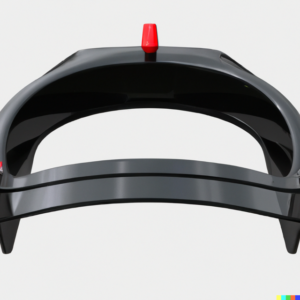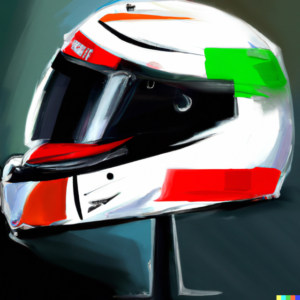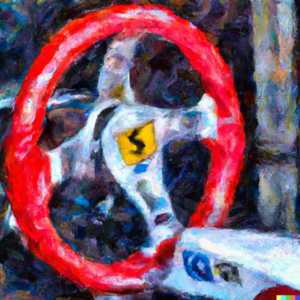F1 Starting Grid

The Formula 1 starting grid refers to the painted markings on the track where the cars start the race and the cars’ position before Sunday’s race.
If you have always wondered why Lewis Hamilton and George Russell seem so close together at race starts, or why Carlos Sainz is often seen starting behind his teammate Charles Leclerc, we have the answers.
In this article, we will look at both meanings of the starting grid so that you can have a full understanding of exactly how it works and how it is determined before a high-speed Formula 1 race.
How Are The Formula 1 Starting Grid Positions Decided?
The full starting grid is decided during the Qualifying sessions, which are usually held on a Saturday; although when it is a sprint race, the weekend’s events look a little different.
During Qualifying 1 (Q1), all 20 drivers have 18 minutes to attempt to set the fastest lap. The slowest five drivers do not make it through to Q2, and will be positioned 16 to 20 on Sunday’s starting grid.
Q2 sees the remaining 15 drivers setting out for 15 minutes. Again, the slowest five drivers do not go through to Q3, and will be positioned 11 to 15 on the grid.
The final ten drivers vie for pole position (first place on the grid) during Q3, where just 12 minutes are allotted to set the fastest times. The position of the drivers in Q3 will determine the pole sitter as well as positions two to ten.
Grid penalties are also common for drivers that have broken rules – either through bad driving behavior or for requiring additional technical work on the car. This means there is no guarantee that your qualifying position will set your starting grid position.
For example, drivers can receive a five-place grid penalty, meaning the driver who finished first in qualifying will now start at P6 on the grid. The final grid is published one hour before the race start on Sunday.
Sprint race format
The sprint race sees a bit of a different format to determine the final grid. Qualifying sessions are used to determine the starting positions for the sprint race – a shorter race where a few points are scored on the Saturday of the Grand Prix weekend.
The positions of the sprint race finishers determine the starting grid positioning for the Grand Prix on the Sunday.
How Does The Formula 1 Starting Grid Work?
The starting positions are determined by either the qualifying sessions or the sprint race. The times recorded during qualifying (or the sprint) correlate to the positioning of the drivers on race day.
The driver with the fastest time will start at the front of the race.
Should there be a tie during qualifying, the driver who set the time first will be given precedence.
Racing stewards can also dole out penalties, causing drivers to drop back down the grid (or even start from the pit lane).
The grid positions are painted onto the circuit as boxes with yellow lines in a staggered formation, with positions alternating left and right.
Who Starts On Pole Position?
Pole position is awarded to the driver who has set the fastest time during Qualifying 3, or who won the sprint race during sprint weekends.
This person is called the pole-sitter.
In the 2022 season, Max Verstappen dominated, starting at pole position seven times. Of note for the latest season was also Haas’ Kevin Magnussen taking his first pole during the Brazilian Grand Prix sprint race (although he finished P8 during the race), and Mercedes front row lockout with George Russell on pole and Lewis Hamilton right behind him at the Autodromo Jose Carlos Pace Grand Prix.
Verstappen’s teammate, Sergio Perez, only took pole position once during the 2022 season. However, he won two races, helping to lead Red Bull Racing to victory in the Constructor’s Championship.
How Far Apart Are The Grid Positions?
The grid positions are staggered, with P1, P2, P3, etc. on alternating sides of the track. Each grid slot is separated by 16 meters.
How Do Drivers Know Where To Stop On The Grid Before A Race?
Drivers sit low in the cockpit, making it difficult to know exactly where to park on the grid. Coupled with the larger 18-inch tires introduced in 2022, drivers’ view of the ground is limited.
The grid slots painted on the asphalt has a long yellow line extending to the right out of the slots. This line is four meters long, allowing drivers to see the line from their low positions.
Drivers simply have to line up their right front tire with the line, triggering a pressure plate under the line that notifies race control that the car is in the correct position.
During free practice, drivers will practice starting from the grid, letting them to hone their skills and apply what they have learned when race day comes.
FAQs
How are grid penalties applied in Formula 1?
After qualifying sessions, the stewards allocate grid penalties according to previous misdemeanors or technical modifications made to the car beyond the allowed scope. Drivers will be moved down the grid, and any other drivers are moved higher up to fill the empty slots.
How is an F1 race started?
After the formation lap, all cars come to a stop in their allocated grid slots. Five lights at the top of the grid light up, and then count down five seconds (each light goes off per second). Once the final light is off, it’s a case of: “lights off and away we go!“
Why do some F1 cars start from the pit lane?
If a car gets a new internal combustion engine or gearbox, it will be penalized and have to start the race from the pit lane.
Final Thoughts
Knowing the ins and outs of an F1 race only adds to the excitement, and this includes understanding why, for example, George Russel starts the race ahead of Carlos Sainz, or why Charles Leclerc always seems to be going head to head with Max Verstappen.





